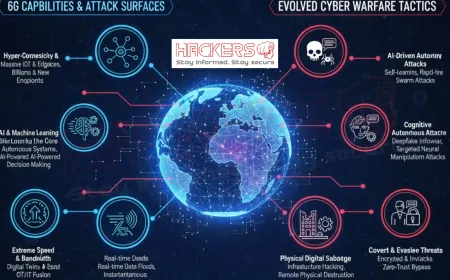How Can Small Businesses Build Enterprise-Level Cyber Defenses?
Your coffee shop’s Wi-Fi is free for customers. A hacker sits in the corner with a laptop. In ten minutes, he steals credit card data from every sale. You never notice. By the time the bank calls, you owe $50,000 in fines. You are a small business. You thought only big companies got hacked. You were wrong. In 2025, 43% of cyber attacks target small businesses. Most close within six months of a breach. But here is the truth: you do not need a Fortune 500 budget to fight like one. Enterprise-level security is now affordable, simple, and essential. This blog shows, step by step, how any small business can build ironclad defenses without hiring a full IT team. Your business is your dream. Let us protect it.
Table of Contents
- Introduction
- Why Small Businesses Are Prime Targets
- The Myth of “Too Small to Defend”
- Core Principles of Enterprise Defense
- Affordable Tools That Punch Above Weight
- 10-Step Guide to Enterprise Security
- SMB vs. Enterprise: Security Comparison
- Real Small Business Success Stories
- Common Mistakes to Avoid
- The Future of SMB Cyber Defense
- Conclusion
- Frequently Asked Questions
Why Small Businesses Are Prime Targets
Hackers love small fish in a big pond.
- Weak defenses: no full-time IT, old software
- Valuable data: customer cards, invoices, emails
- Supply chain access: hack you, hit your big clients
- Ransom works: 60% pay to survive
- Low awareness: “It won’t happen to me”
IBM says average SMB breach cost: $120,000. Many never recover.
The Myth of “Too Small to Defend”
Big companies spend millions. You do not have to.
- Cloud tools: pay per user, not per server
- Free tiers: Google, Microsoft, Cisco offer basics
- Managed services: outsource to experts for $99/month
- Automation: AI does the heavy lifting
- Open source: powerful, zero cost
Enterprise security is now a service, not a salary.
Core Principles of Enterprise Defense
Follow these. No exceptions.
- Zero trust: verify every user, every device
- Least privilege: give only needed access
- Defense in depth: multiple layers of protection
- Continuous monitoring: watch 24/7
- Incident response: plan before the breach
- Employee training: your team is the firewall
These are not extras. They are the foundation.
Affordable Tools That Punch Above Weight
Best-in-class, under $500/month.
- Microsoft 365 Business Premium: email, endpoint, MFA ($22/user)
- Google Workspace + Chronicle: AI threat detection ($12/user)
- Cisco Umbrella: DNS security, blocks malware ($3/user)
- CrowdStrike Falcon Go: AI antivirus ($59/device/year)
- 1Password Teams: password manager ($4/user)
- KnowBe4: phishing training ($3/user/month)
- UpGuard: vendor risk monitoring ($99/month)
Total for 10 employees: under $400/month. Less than one lost day.
10-Step Guide to Enterprise Security
Do these in order. One per week.
- Step 1: inventory all devices, apps, and data
- Step 2: enforce strong passwords + password manager
- Step 3: enable multi-factor authentication (MFA) everywhere
- Step 4: update all software automatically
- Step 5: secure Wi-Fi with WPA3 and guest network
- Step 6: back up data daily (3-2-1 rule)
- Step 7: install endpoint protection (antivirus + EDR)
- Step 8: segment network (IoT, guests, staff)
- Step 9: train staff monthly on phishing and policy
- Step 10: write and test an incident response plan
Ten weeks. One fortress.
SMB vs. Enterprise: Security Comparison
You can match the giants.
| Feature | Typical SMB | Enterprise | SMB with Plan |
|---|---|---|---|
| MFA | SMS or none | Hardware keys | App + push |
| Endpoint Protection | Free AV | EDR + AI | CrowdStrike Go |
| Backups | None | Immutable, offsite | Veeam + cloud |
| Training | Never | Monthly sims | KnowBe4 |
| Monitoring | None | 24/7 SOC | MDR service |
Real Small Business Success Stories
Proof it works.
- Bakery in Ohio: stopped $20K ransom with MFA and backup
- Law firm in Texas: blocked phishing with Cisco Umbrella
- Dental clinic in Florida: recovered in 4 hours using Veeam
- Cafe chain in UK: trained staff, zero breaches in 2 years
- Auto shop in Canada: used YubiKey, saved client data
They spent under $5,000 total. All still in business.
Common Mistakes to Avoid
Do not do these.
- Using personal email for work
- Letting staff use personal devices without policy
- Skipping backups “to save time”
- Trusting free public Wi-Fi for payments
- Ignoring software updates
- No written security policy
One mistake = one breach.
The Future of SMB Cyber Defense
By 2030, security will be built-in.
- AI co-pilots: auto-block threats
- Zero trust by default: in every app
- MDR for all: managed detection under $100/month
- Cyber insurance: requires hygiene score
- Global standards: ISO for SMBs
The gap between small and enterprise is closing. Fast.
Conclusion
Small businesses are not small to hackers. You hold customer trust, payment data, and your livelihood. One breach can end it all. But enterprise-level defense is no longer out of reach. With cloud tools, automation, training, and a simple plan, you can protect like a giant for pennies on the dollar. Start today. Inventory your assets. Enable MFA. Back up your data. Train your team. The cost of action is small. The cost of inaction is everything. Your business deserves enterprise security. Build it now.
Frequently Asked Questions
Can a small business really afford enterprise security?
Yes. Tools like Microsoft 365 and Cisco start at $3 to $22 per user per month.
Do I need an IT person?
No. Cloud services are managed. Use MSPs (managed service providers) if needed.
Is free antivirus enough?
No. Use EDR (endpoint detection) like CrowdStrike or SentinelOne.
Should I allow personal phones at work?
Only with MDM (mobile device management) and company Wi-Fi.
What is the 3-2-1 backup rule?
3 copies of data, 2 local, 1 offsite (like cloud).
Is MFA really necessary?
Yes. It stops 99.9% of account takeovers.
Can I use Gmail for business?
Yes with Google Workspace. Free Gmail lacks security controls.
Do I need a firewall?
Yes. Next-gen firewall via cloud (Cisco, Fortinet) or router.
How often should I train staff?
Monthly phishing tests. 15 minutes each.
Is cyber insurance worth it?
Yes. But only if you have hygiene. Insurers now audit.
Can I outsource all security?
Yes. MDR (managed detection and response) costs $99 to $500/month.
Should I segment my network?
Yes. Separate staff, guests, IoT, and payments.
Is Windows Defender enough?
For home, yes. For business, add Microsoft Defender for Business.
Do customers care about my security?
Yes. 80% won’t return after a breach.
Can I use open-source tools?
Yes. pfSense, OSSEC, and Wazuh are enterprise-grade and free.
What is zero trust?
Never trust, always verify. Every user, every click.
How do I start today?
Enable MFA on all accounts. Turn on auto-updates. Back up data.
Will AI make security harder?
Yes for attacks, no for defense. AI tools block AI threats.
Do I need a written policy?
Yes. One page: passwords, devices, reporting.
Where can I learn more?
CISA.gov, NIST Cybersecurity Framework for Small Business, StaySafeOnline.org.
What's Your Reaction?


























































